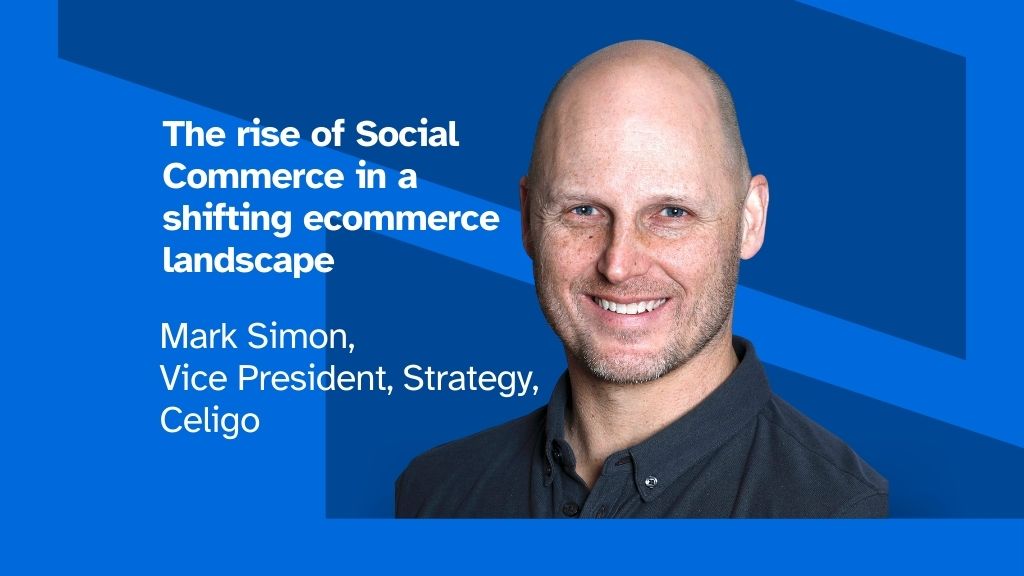by Mark Simon, Vice President, Strategy at Celigo
The ecommerce industry is undergoing a transformative shift, with social commerce emerging as a dominant force that is altering consumer behaviour and challenging traditional retail giants. This evolution is particularly evident during major shopping events like Amazon Prime Day, Black Friday, and Cyber Monday, where the dynamics of consumer engagement are changing rapidly.
The peak of Amazon Prime Day
Over the last ten years, Amazon Prime Day has become an increasingly important event on the ecommerce calendar. In 2023, it set a record as the most significant sales day in Amazon’s history, with Prime members purchasing an astonishing 375 million items over just 48 hours. According to the Celigo Platform, a prominent ecommerce integration solution, sales transactions surged by 58% during this event compared to an average day.
However, experts suggest that the once-unassailable prominence of Amazon Prime Day may be waning. What was once a highly anticipated shopping event is increasingly perceived as just another sale amid a barrage of ongoing promotions. This shift reflects broader changes in the ecommerce landscape, driven by several key trends.
Proliferation of deal-based platforms
The rise of deal-based platforms is fundamentally reshaping the e-commerce ecosystem. Websites and apps like Wish, AliExpress, and Temu have popularised year-round discounts, undermining the exclusivity and excitement associated with major sales events. Deal aggregators such as Slickdeals, RetailMeNot, and Honey further empower consumers to find the best prices, reducing reliance on specific shopping events.
This continuous availability of deals has created a price-sensitive environment, compelling retailers to maintain ongoing promotions to stay relevant. Consumers have become adept at comparing prices across various platforms, leading to more sophisticated pricing strategies as retailers seek to balance competitiveness with profitability.
Rise of super-apps
Super-apps have emerged as a powerful force in the e-commerce world, offering consumers a one-stop solution for a wide range of services, including shopping. These multifunctional applications combine various services such as messaging, social networking, financial services, and ecommerce into a single, integrated platform. Examples like WeChat in China and Grab in Southeast Asia have demonstrated the potential of this model, providing users with a seamless experience across multiple services without the need to switch between different apps.
The convenience offered by super-apps is particularly appealing to consumers who value efficiency and simplicity in their digital interactions. By consolidating multiple services, these apps can provide a more personalised and streamlined user experience, leveraging data from various touchpoints to offer targeted recommendations and promotions. For businesses, super-apps present an opportunity to reach a wider audience and benefit from the ecosystem’s network effects. However, the rise of super-apps also poses challenges for standalone e-commerce platforms, as they must compete with these all-in-one solutions for consumer attention and loyalty.
The social commerce revolution
Social commerce is fundamentally changing online retail by merging social media and ecommerce. Platforms like TikTok Shop, Instagram Shopping, and Facebook Marketplace have integrated shopping experiences into social interactions, harnessing the power of social influence and user-generated content.
This model provides unique advantages, allowing brands to utilise influencer marketing more effectively. Live shopping events have gained popularity, enabled real-time product demonstrations and fostered interactive shopping experiences. Additionally, advanced AI algorithms enhance personalisation by tailoring product recommendations based on users’ social media behaviour, transforming how consumers discover and buy products.
Implications for ecommerce retailers
In this rapidly evolving landscape, retailers must adapt their strategies to remain competitive. Many are diversifying their presence across multiple channels beyond Amazon, aiming to connect with consumers where they are most active. This multi-platform strategy not only mitigates risks but also opens new avenues for tailored marketing approaches.
Retailers are experimenting with various marketing strategies tailored to the unique characteristics of each platform, whether through influencer partnerships or marketplace optimisation. There’s also a growing focus on creating engaging content and interactive experiences—such as live shopping events and augmented reality try-ons—to capture consumer attention in the crowded social commerce space
The future of ecommerce
The future of e-commerce will be characterised by a landscape that is increasingly fragmented and deal-centric; new strategies will be needed by retailers to stay competitive. Continuous engagement will be paramount, with brands looking to foster ongoing relationships with consumers through social media and various digital channels to maintain relevance and loyalty. Personalisation will play a crucial role, as retailers leverage advanced data analytics and AI to deliver tailored shopping experiences that cater to individual preferences and behaviours. The lines between social media, entertainment, and shopping will continue to blur, creating seamless, integrated consumer experiences that feel natural and intuitive. While major events like Amazon Prime Day will retain significance, the rise of social commerce is fundamentally reshaping the e-commerce landscape. Consumers are and will continue to gravitate towards platforms that offer a combination of year-round deals, immersive experiences, and social interaction. Along with that the desire for a seamless buying and returns experience, regardless of sales channel or approach taken by the retailer, will continue to be a growing theme across customers.
In this evolving environment, the key to success for retailers will not lie in isolated sales events, but in their ability to create continuous, engaging, and personalised shopping experiences across multiple platforms. This shift represents a significant departure from traditional e-commerce models, emphasising the need for adaptability and innovation in retail strategies to meet the changing expectations of modern consumers.












